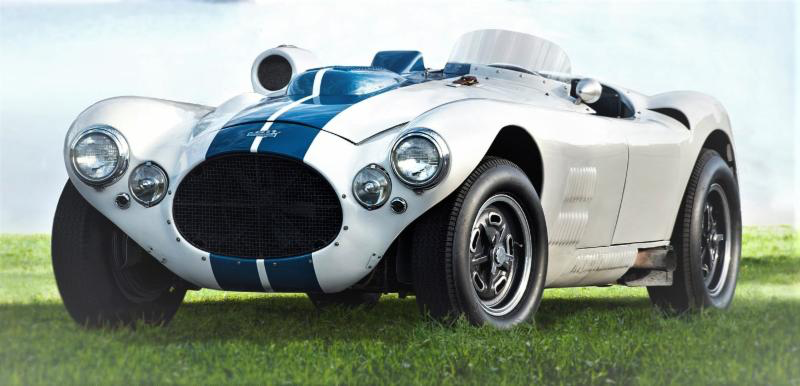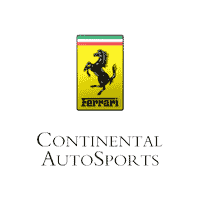Once Upon A Wire Wheel
The following is the seventh in a series of articles recalling highlights from the Region’s beginnings through the first 50 years. This was written by Bernie & Norm Koglin with input from Fred Wacker, Bud Seaverns, and Burdie Martin to name a few. Look for more articles though out the year. Have fun exploring the past and how it relates to now.

The Future is Almost Here *1982 – 1989
In 1949 a small group of relatively affluent men that had discovered “sports cars” founded the Chicago Region. Their purpose was to organize activities that provided opportunities to enjoy the characteristics of their cars, which at that time offered handling and performance far superior to the post-World War II products offered by U.S. auto manufacturers. Region members were bound together by their mutual interest, which generated a strong social component to the Region’s activities. Everyone participated in autocrosses, rallies, concours, hill climbs, and acceleration runs, followed by dinners, picnics and other social gatherings. Soon, wheel to wheel racing appeared on the events schedule, and subtle changes began to take place. More and more out-of-Region people became involved in our races, large numbers of staff were necessary, and putting on races was considerably more complex than the earlier low-key events. By the time we entered the 1980’s high performance cars abounded, but new equivalents of MG’s, XK Jaguars, Porsche Speedsters, Triumphs, etc. did not exist. The sense of camaraderie that came from waving at the driver of another “sports car” was gone. (Honda drivers seldom greet oncoming Preludes.) Traffic on our public roads had increased dramatically, and Radar detection added another, undesirable element to rallying. There seems to be little enthusiasm to toothpick and cotton swab detail a mass produced car for a Concours d’elegance. Furthermore, the organization and conduct of races had become much more involved and required a new level of participation and experience. Every specialty starting with Race Chairmen through Paddock Control required better-trained and capable personnel. Within the limits of time available to many members, these activities had become the extent of their participation.
Enter 1982, and the calendar of Club events this year was to be similar for all of the 80’s: a drivers’ school; regionals at Blackhawk Farms and Road America; and the June Sprints. Once again, the June Sprints was the premier National Race, with a huge number of entries, (including Paul Newman) and a nice spectator turnout. A vintage race July 4th weekend featured a fine turnout of cars, a “cookoff” by 10 count ’em 10 chefs and 30 cases of wine supplied by Nicolas Wine Company. Al Holbert won the Can-Am, followed 20 seconds later by Danny Sullivan. The ’82 Trans Am began to take on the look we have come to expect from this series, and after setting a new Trans Am race lap record, Jerry Hansen drove his Corvette to a win. John Fitzpatrick and David Hobbs in a Porsche Turbo won the IMSA Camel GT Pabst 500 (MILES!), one lap and 57.85 seconds ahead of 2nd place. Chicago Region hosted the Solo II Nationals at GREAT AMERICA, with Claire Ball and Dan Tondu serving as co-Chairmen. Over 600 drivers competed for 34 National titles, an example of the enthusiasm and strength of the Region’s Solo organization.
And now the CART IndyCar World Series appears at Road America for the first time. It is unlikely that many of us predicted the impact this series would have on Road America, and to some extent, on the Chicago Region. CART was a big bucks, pro organization, different from anything we had been involved with previously. Their operating personnel were not comfortable relying on our corner reports. After all, on ovals they could see everything . We, on the other hand, were new to the way CART operated. As can be imagined, the atmosphere in the Control Room was incredibly intense during on-course incidents, but the process of learning how to work together had begun. Working together would be essential, since the large spectator turnout was a clear indicator that this was going to be a popular and financially important event for Road America. 1982 was Chicago Region member Bobby Rahal’s rookie year in CART. Since he had won the CART Cleveland 500 Km. race and had qualified second to Rick Mears at Road America, hopes were high for him. Mears only needed a 6th place finish to win the CART championship and paced himself accordingly to finished 5th. Bobby led toward the end of the race, but ran out of fuel at corner 12, turning the lead over to a surprised Al Unser, Jr. Little Al in turn came to a stop at corner 5 on the last lap, suffering the same problem as Bobby. Hector Rebaque, another rookie, started 9th, drove in the top 5 for the entire race, and inherited a deserved win when Al Jr. parked. Bobby refueled, went back out, and finished 4th.
Al and John Sutton were rallymasters for another “Suttons’ October Safari” tour rally. A terrific two-day event that attracted a good entry. Events such as this bring back that old-time “fun with your car” spirit.
In 1983 we mourned the passing of another long-time, devoted member of the Region. Justin T. “Maj” McCarthy had been in charge of the pits at our events for as long as most could remember.
Ron Tambourine in his Mazda RX3 was the only Chicago Region June Sprints® race winner in 1983, and in one of his remarkable efforts, Jerry Hansen won SSGT, GT-2 and F-Atlantic. Paul Newman drove a heck of a race during the ’83 Trans Am, running a close 2nd to eventual winner David Hobbs until his engine went, late in the race. John Fitzpatrick won the Can-Am in a Porsche 956, followed by Gilles Villeneuve, father of the current Williams F1 driver. Mario Andretti won the CART Provimi Veal 200, his first CART win since 1980, and Bobby Rahal ran out of fuel – again while leading. Ford entered two radically designed cars in the IMSA Budweiser 500. They were four cylinder, 600 hp, turbocharged cars that proceeded to finish 1st and 2nd. Ludwig/Coconis won followed by the Rahal/Brabham car. This was a heavily promoted, major effort and many presumed it was the kick-off for an other Ford assault on road racing, but that was not the case. Too bad!
And so on go the ’80s. The resur-rected Can-Am just didn’t make it and disappeared from the schedule in 1983. Each successive year Road America’s CART race attracted more spectators, ultimately surpassing the crowds of the original, great Can-Am. Super TV coverage was a major factor, but great racing and name drivers certainly helped. Trans Am evolved into the series we know today. Spec-tator attendance at IMSA events continued to be disappointing, not-withstanding fields that included the latest version Porsche turbos. AMA motorcycle events continued to be successful at Road America, drawing large crowds and turning substantial profits for the Track. Sports Renault made its debut in 1985, and would become a roaring success. And then Renault pulled out, which required an SCCA scramble to reestablish the Class as Spec Racer Ford. Pinewood Derbies were put on by the Region a few times, and were quite competitive. While it continued to attract more entrants than any other regular season race, SCCA’s premier National, the Chicago Region June Sprints, began to lose ground in the competition for RA spectators. A choice of many Road America events, TV exposure of pro racing, and only token Sprints advertising efforts, all contributed to the decline. Vastly improved pits and paddock appropriate for a top-notch professional race course came at an expense – the loss of the old Pagoda and with it much of the historical charm of Road America. Charm that the new VIP/Press/Control building somehow does not offer, to say the least.
By the end of the decade our mem-bership was in the neighborhood of 2000, and Chicago is arguably the most capable region in SCCA at putting on races. But the concentration of effort and time expended on races seems to have taken away the energy to organize, promote and conduct much informal auto-related and social activity for our members. Surely there are among our 2000-plus members some that are interested, and ready to participate in such activities. They should let the Region’s leadership know of their interest. A good example is the Solo Group that continues to successfully organize and run its events under the auspices of the Region. As we approach the millennium much change is in the wind. The next fifty years could be mighty interesting.
If you don’t know where you’re going, you’ll end up someplace else. Yogi Berra
Editor’s Note: These articles end in 1989. If any one out there would like to put pen to paper with interesting facts from the years 1990-1999 & 2000-2018 we would very much appreciate them. Send your memories, facts or ramblings to: PegBall@Comcast.Net. Thanks!


